We were having such a quiet and relaxing Xmas day, – until the storm broke.
Monthly Archives: December 2014
A Handmade Christmas
We have been busy making things for Xmas.
We have been making beer, making porcelain body and making kilns, cooking and sewing. I’d like to claim that I have been making music as well, but I’m so bad at playing my cello that I can’t claim that the noise I make is music, just noise — but with some sort of intent and structure.
I had a kiln ordered for before Xmas as well as one for after Xmas as well, while the first one was at the galvanisers, waiting to be dipped in molten zinc to permanently rustproof it. I spent the waiting-time, and there is always waiting time at the galvanisers, 3 weeks is usual and longer nearer to Xmas. I spent this time productively making a small re-locatable kiln on castors. This one is for a potter who only has the use of one arm, so everything had to be designed to be flexible and achievable one-handed. This kiln is designed to use 2 quite small and thin kiln shelves, so that it can be loaded with one hand. The kiln has a ceramic fibre-lined lid, which is light weight and hinged, using an adjustable hinge system, that I built, so that it can be lifted simply up into a safe position and held there with chains, just past the pivot point. As the ceramic fibre on the lid seal compresses the hinge can be adjusted to allow for the change in height, so as to maintain a perfect seal. The gas burners are self-igniting using a piezo-electric ignition system that can be operated along with the thermo-electric safety switch, all with one hand.
I’ve tried to think it all through so that it is as flexible and practical as possible as well as being safe. I have to make sure that it conforms to all of the Australian Standards as well.
Yesterday, we spent a day washing, cleaning and sterilising 60 of our 30 year old beer bottles. There are some real antiques in this collection. Labels from breweries that you can’t buy any more. The old Coopers long necks were so solid and reliable. It takes longer to clean, sterilise and dry them than it does to fill and cap them. It takes us most of a leisurely day to get it all done and then clean everything up again and put all the gear back in its place. It’s a once a year job.
60 bottles of beer will last us all year, because we also make cider from our apples in the autumn, as well as a small amount of wine from our shiraz grapes. Last year we didn’t get to make any cider, because after the bad bush fires that cleaned up all the forest around here. There was not very much for the birds to eat, so they came here and cleaned up every piece of fruit that wasn’t netted. The apples trees are just too big now in their 38th year to get nets over, so there was no crop, hence no cider. However, the year before was really good and we made 120 bottles of cider, so we still have plenty in the cellar, enough to last a few years. Once the bottles are crown sealed, the cider will last many years. We have drunk it up to 5 year old with no noticeable deterioration of flavour or head/mouse.
I try to make a years supply of porcelain clay body in the summer time while the weather is hot and the humidity is low. It is made from ball milled ‘bai-tunze’ porcelain stone in a liquid ‘slip’ form, so it needs to be dried out and firmed up on a drying bed in the sun after milling. These drying conditions have not been present up until now. We have had almost constant rain, thunderstorms and showers every day since I got back. It’s been wonderful for the garden and orchards. Now it is easing off a little I’m hopeful that I can get some porcelain made. I’ve started the process of crushing and ball milling and will store the body as slip to age until I can get it dry. I should have been doing this before today, but there just isn’t enough time in the day to do everything that I want to achieve. As well as make a living.

close-up of the stone fragments. They have the same black mould on the surface as the similar porcelain stone from Arita.
I got an unexpected Xmas gift yesterday. I went for a hearing test, because my doctor thought that I might be loosing some acuity in one ear in my old age. The Lovely often says that I don’t listen, but I think that that is another matter all together. I was concerned, because a life spent working with power tools, angle grinders, rock crushers, ball mills and chainsaws, must surely have taken its toll. Fortunately, the audiologist found that my hearing was normal for someone of my age, not perfect, but OK. I must admit that some times I don’t wear the ear-muffs on every single occasion that I ought to, but I wear them most of the time and the benefits of that cautious behaviour are now paying dividends.
A nice unexpected present.
We decide to cook one of the last pieces of lamb that our son Geordie bought in the middle of the year. As he is a chef at a very prestigious restaurant with a couple of ‘hats’ rating. He will be cooking Xmas dinner for everyone else today. We will have our Xmas lunch with him tomorrow. This last piece of his lamb is the saddle with the eye fillets. Saving the best till last. This will be this months red meat meal. I simmer it very gently in a bottle of our home made quince cider along with a couple of our sliced onions. Put half a bottle of quince puree in the mix and spread the remaining half bottle of puree over the top of the saddle as a paste. After 1 1/2 hrs I drain it off and add a little of our local EV olive oil. I add a few of our newly lifted new season potatoes, a couple more onions and half a bottle of preserved baked, quartered quinces from last autumn. I bake this combo slowly for another 1 1/2 hrs. It’s a triumph of melt-in-your-mouth flavours. The twice baked quinces are amazing and the quince puree that has covered the lamb has kept it succulent and moist and amazingly flavoursome. We are very lucky people to be able to enjoy what would otherwise be an unaffordable meal. Janine steams some of our diced zucchinis with mint leaves. I go under the floor and into the wine cellar and retrieve a bottle of 1994 Wynns Coonawarra, John Riddoch, Cab sav. At 20 years old, it is amazingly spritely and still just a little bit tannic. It still has plenty of life left in it. I open it when we start cooking and it is very mellow and smooth, rich and complex and by the time the meal is ready, it is well breathed and a very good match. I still have one bottle left in the box. We’ll try it again in another couple of years.
We spend the rest of the day relaxing. Janine reading the letters of John and Sunday Reed, while I get out my cello.
I am really grateful that we are able to live this indulgent, self-reliant life that we have chosen for ourselves. On this quiet day, when it isn’t possible to do much else, we do what we always do. I check out the garden, pull a few weeds, pick some food for dinner, do a bit of watering of those soft, tender young seedlings, I also unload the ball mill that was running for 16 hours over-night milling 30 kgs of porcelain stone. While The Lovely spends a relaxing morning cutting up some worn out cotton pants and making a couple of pairs of ‘gaiters’, ankle protectors to cover her socks and boot tops while gardening and mowing. Nothing is thrown out until it has been well and truly all used up. Re-used, re-purposed and finally re-cycled. I am also immensely grateful that we are fortunate enough to be living here, where there are no helicopter gunships, no land mines and no civil war. I am aware that we are very fortunate indeed!
I am grateful.
fond regards from a lucky bloke and his industrious captain of her own of industry
First and Last
Wishing you all a very Happy Solstice Greetings in traditional red and green colours.
Coming Clean
Coming Clean
One job that crops up 2 or 3 times a year is the making of liquid soap ‘gell’ for washing clothes. The Bright and Shiny King of Household Management is on to it and is well prepared. She has been doing this continuously since the early 80’s. Miss ‘Sunlight’ uses one cake of cheap generic brand laundry soap, which is still made in Australia surprisingly. The Soap Queen cuts the block of soap into thin slices. about 1/3 is used in each batch.
This amount of shredded soap ‘flakes’ is dissolved in a couple of litres of boiling water. We usually do it when the wood fired stove is lit, so as not to waste energy. The dissolved soap concentrate is then mixed with cold water up to about 7 or 8 litres in a bucket. If you want to add some fragrance, this is the time to do it. The diluted mixture is poured into flagons for long-term storage under the laundry sink. This is repeated, this is repeated, this is repeated, 3 times, until the whole block of soap is used up and all the available recycled plastic bottles and flagons are full, about 20 litres in all. This amount of soap ‘glug’ usually last us about 4 months for all our clothes washing needs.
She is my Sunlight, my only Sunlight, She makes me happy when clothes are grey – by washing them with home-made soap.
We have what is now, a very old, front loading washing machine that uses our own stored solar hot water, instead of electrically heating cold water. This saves energy. The front loading design also uses less water and energy all up. This machine was built in Europe and we have had it for well over 20 years. It’s been exceptionally reliable and paid for itself many times over in all the water and energy that it has saved us.
We used to add an equal amount of washing soda crystals to this clothes washing soap mix, but we read that the soda was bad for the soil and the water ways, where it inevitably ends up, so we cut it out from the recipe some years ago and haven’t noticed any difference in the outcome of our washing.
The reason that we started to make our own washing soap ‘glug’, was after we read a shocking report on the build-up of phosphates in the water system and the blooms of algae that occurred in some of our rivers during the summer ‘dry’ back then. We decided then that we ought to do something ourselves to take control of our part of the system. So we stopped buying phosphate detergents. We’ve rarely needed to use much detergent since then. We still buy the occasional bottle of ‘green’ detergent. It claims to very environmentally friendly, but all advertising does. It’s sodium Laurel sulphate based. a small compromise. We only use it for the very odd occasion when I need to wash my very dirty work clothes, especially if they have oil or grease on them. But this is fairly rare.
I always wash the dishes using the same laundry soap, which I scrub against a green dish scourer pad and then scrub the dirty dishes with that scourer. The soap cuts the oils from cooking with no trouble and because all our pots and pans are beautiful objects in their own right, it’s really good to get to handle each item as it gets washed, rinsed and placed in the drainer. Half of all the ceramic pots that we use are things that we have bought from other potters on our travels. Miss ‘Sunlight’, The Soap Queen, rotates the pots in the kitchen, so that it is always interesting to use newly recycled pots that we haven’t used for a while.
We don’t own a dish washer machine. I’m not too sure about the strong detergents that they use in those machines. Anything that can slowly dissolve plastic cups and strip the 24 carat gold lustre off ceramics, can’t be too good for the environment? As all our water is recycled through the soil on our own block of land here. I don’t want that kind of stuff in my orchard, growing my fruit. Best not to get involved. Leave it on the shelf, in the shop.
All the kitchen cookware has been collected over many years on our travels and most of it is tinned copper or stainless/copper combination. They are lovely things to handle and use. I wash these with the same soapy plastic scourer pad and after rinsing I give them and extra wash-over with a piece of used lemon rind with some salt on it. This keeps them always looking new and shiny. Soap is all that is needed to dissolve the grease and oils that we use in cooking. Mind you, we don’t tend to eat very many greasy things. Most of our cooking is by streaming with just a little use of olive oil to stop things sticking too much.
This week the zuchinis have started flowering in profusion, so we have begun eating those, stuffed with ricotta cheese and various diced condiments. Miss frugality saw two litre flagons of our local organic milk offered at $1 on it’s use-by date. The King of Curds brought it home and made ricotta out of it that afternoon – no time to loose, it might curdle 🙂
For stuffing zucchini flowers, the ricotta has to be well drained and pressed. The rubbish that is sold as ricotta in tubs the supermarket is all water. Artisanal ricotta may be a bit more expensive, but it’s got 50% more cheese solids in it and less water. If you try to use the cheaper commercial tub stuff it drains out of the flowers in a big wet watery mess. It still tastes OK, but it doesn’t fill me with joy to see my beautiful flowers all turn to ‘sog’ in a pool of cheesy water. No whey!
I’ve been using our own preserved nasturtium seed, masquerading as imitation capers, our own dried tomatoes and this season’s fresh, but small garlic, local olives and some anchovies. This time I used a few pickled green French beans instead of a gherkin and I’ve been adding a little bit of firm blue cheese in the recent mixes. It makes a lovely combination of flavours in the savoury cheese filling. I don’t use much of it, but just enough to give it a hint of spice to the otherwise rather bland curd filling. They don’t just taste good, but the flowers look lovely too.
All the seeds that I planted in the past few weeks are all up now and putting on some size with all this rain that we have been having combined with the warm weather, it has made for good growing conditions. On the other hand, it has been so wet that I haven’t bothered to mill any porcelain stones into slip as yet, as the slip wouldn’t have dried at all on the drying bed. I’m not set up for drying clay in the rain like they are at Onta in Kyushu. See earlier blog. I was able to make good use of all the indoor time by building 2 kilns for my customers and getting everything done right on schedule.
So I’m pleased. The garden looks good and is producing all our summer fruit and vegetable needs. We are already bottling our excesses. The bit of flat dirt that we laughingly call the ‘lawn’, is actually green in summer. That is something that we haven’t seen for quite a few years and we have plenty of work lined up.
from my Miss Sunlight and her Mr Bubbles
Portents and signs
This time last year we were fighting bush fires. This year it’s all different. There are no fires here now. It’s turned out to be a very wet start to the summer. It’s hot, but also wet. On the 3rd of December we picked our first ripe tomato of the season. That is so very early. We have never been able to do that before. We usually get our first tomatoes in January. If we are lucky and very industrious, we might get a very early plant to give as it’s first fruit in the week between Xmas and New Year. But this year it’s all different. Annabelle Sloujetté planted 3 advanced seedling tomatoes for us in the vegetable garden while she was house sitting, sometime while we were away in September or October. Apparently there were no sudden cold snaps or even very cold nights from that time on. So here we are in the first week of summer and eating our own red ripe tomatoes. It’s a miracle! Or is it just a sign of things to come? A Portent?
Tomatoes don’t ripen in the sunshine. They respond to the day length and average temperature. Certainly, If they get too much sun, they get sunburnt and develop bleached white leathery scars. Not nice. To help prevent this, we have developed a system of growing our tomatoes here, where we don’t stake them up, but just allow them to sprawl across the ground. The fruit hangs down and is shaded by it’s own foliage above. It’s a lot less work, the shady foliage discourages weed growth and retains soil moisture. We mulch the plants well and as long as the fruit doesn’t get attacked by slugs and snails, the system works quite well. Less work, less weeding, less watering, less bleaching.
We have lifted the garlic crop it was very poor this year. As there was virtually no rain for the whole time that we were away, the bulbs didn’t get a chance to swell up in their final months of growing. We have plenty of plants. They all survived, but the bulb size is very small. The smallest that I’ve seen in all the years that we’ve been here. It’s flavoursome and intense, just tiny. Is this a portent of a hot, dry future?
I lift them all and lay them out on the north facing verandah to dry in the sunshine for a week, then Miss industry herself, cleans and plaits them into bunches. I bring in the big 3 metre step-ladder and Miss Plait passes them up to me as I hang them up from the kitchen roof truss to dry further, ready for use as we need them. They are so small this year that Miss Plait gets about 20 to 30 knobs in a plait, instead of the usual dozen.
The smallest of the crop isn’t worth plaiting and hanging. It all goes into a basket on the kitchen work bench. They are so small that I don’t bother to try to peel them. I just bash the knob with the side of a large chef’s knife to separate the cloves and them place half a dozen of the tiny segments into the garlic press and mash them out of their papery skins straight into whatever dish I’m preparing. It’s a lot less effort than peeling them and works just as well. In fact, I read somewhere that garlic releases more of it’s flavour if it is crushed like this instead of just being cut and sliced.
The rain has now come in this first week of summer. We have 30oC days and then a big thunderstorm in the afternoon. We get 10 to 20 mm. most afternoons. Over the week, the system settles in to a rhythm of days in the high 20’s with rain and scattered showers throughout the day or overnight, with occasional heavy storms and hail. Fortunately, we have missed out on the really bad hail here, but up the road a bit, it was piled up to a foot thick and remained there for a day or two afterwards in frozen beds of ice in the shady places. Since we have netted our garden, the netting has helped dissipate some of the damage that we used to get from the hail. All this water is very welcome in the beginning of summer. It’s better than bush fires and everything is growing well in the combination of warm weather and lots of water. We haven’t had to water the garden for a couple of weeks now. Doesn’t the weather know that it’s supposed to be summer? It’s a miracle! Or is it a portent? We have a full dam and green grass in the lawn, instead of the burnt off crisps of brown and dry, parched, dusty gravel. If this is the new ’normal’ then I’m happy about that.
We have been continuously picking the youngberries every alternate day, all this time and Miss Plait has been bottling and preserving them each day. We are up to 20 jars now in the larder. It’s been a very good crop. Their season is almost over now, with only a couple of small pickings remaining on the canes. We have been getting 2 to 3 kilos each pick. Surprisingly, there is very little rot in the fruit, even though we have been getting all this rain. Young berries seem to be another one of those fruits that seem to ripen due to-day length and average temperature, without direct sunshine. The best fruit is to be found deep in and under the dense foliage on the shady side of the canes.
The early peaches are all picked and we have finished eating the last of the fresh fruit from those early trees. The freezer is full of punnets of stewed peaches, which we will start to eat soon, as we wait for the late peaches to come on. Each morning we breakfast on berries, peaches and strawberries with yoghurt.
We also started to pick our first zucchini, capsicum and chills in the same week. It’s a sign! These were all early plantings done as a gift by Annabelle Sloujetté in our absence. It’s a gift! A lovely gift. And one that is very gratefully and thankfully received.
I have been busy in the garden too, along with Miss Plait. I think that I’ll have to start calling her Sylvia, because she’s poetry in motion. Or maybe Ariel. That’s a sign!
I planted corn seeds the day before I left, at the end of August and they are flowering now. The first thing that I did in the garden when I returned was to buy some sweet corn seedlings in a punnet at the markets so that there would be some continuity. I also planted out some more seeds at the same time. These will take some time to germinate and guarantee a continuity of sweet corn over the summer. We pull out all the old tired left overs from the winter garden. I shred them along with all the other stuff for the compost, by laying it all out on the grass and driving over it with the mower. The shredded mulch is so much more compact and rots down quicker. It also shreds the snails hiding it’s midst.
While we are at it, and the rain is holding off. It’s a bright sunny patch in amongst all the rain. We rejoice in the sunshine and spend the rest of the day, weeding, pruning and mulching. I stake up some of the winter plants that have gone very leggy as they go to seed. So I stake them up to keep them tidy and out-of-the-way so that I can make room to plant other things in the row. I plant out a lot of seeds for later in the summer; lettuce, carrots, beetroot, rocket, radish, mesclun, mizuna, dwarf French & climbing beans, plus Lebanese cucumbers. Finally, we cut back a lot of the leggy herbs and Miss Sylvia Plait crops the Russian Tarragon. As the rain returns we head to the house and I trim the tarragon leaves and fill a white wine vinegar bottle with them, to steep for later use.
At the end of a long day we head for bed and dream of wonders, portents and signs.
fond regards from, the rhyming couplet of Silvia Plait and Her Man whose fingers smell of Garlic


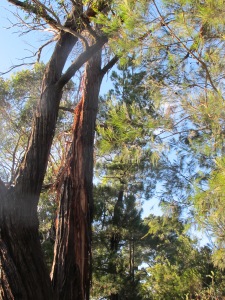




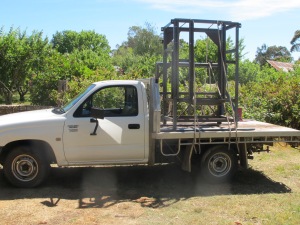

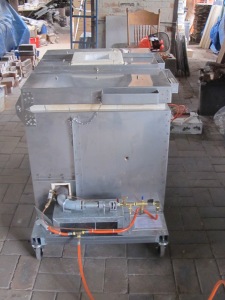







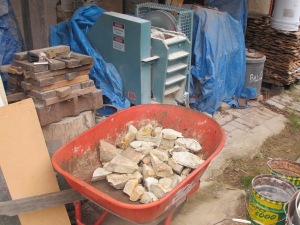
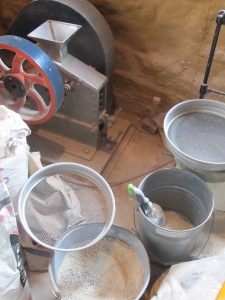

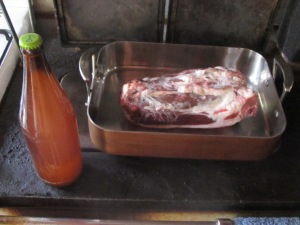


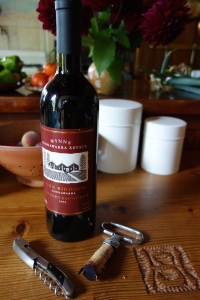
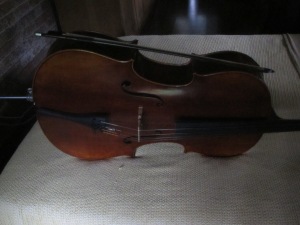
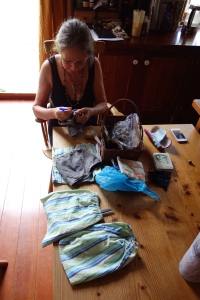









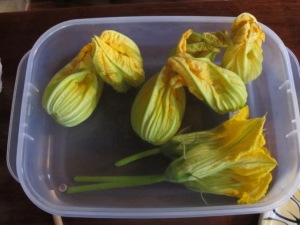
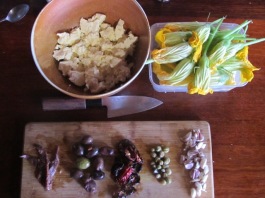
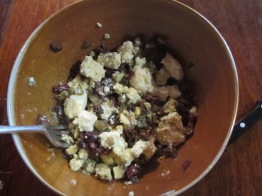

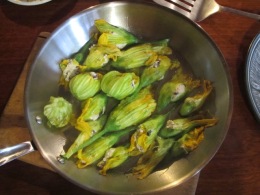

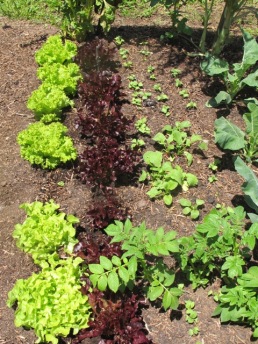

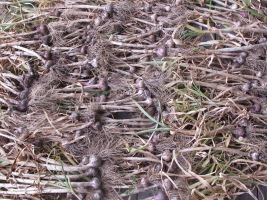



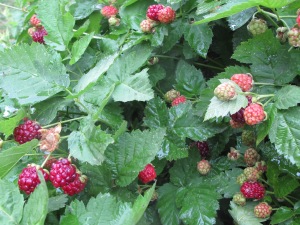



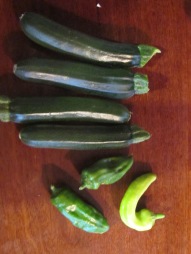
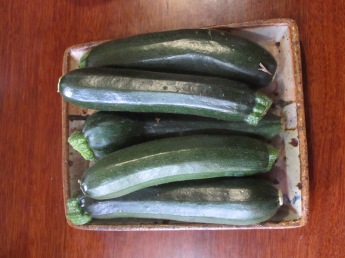






You must be logged in to post a comment.